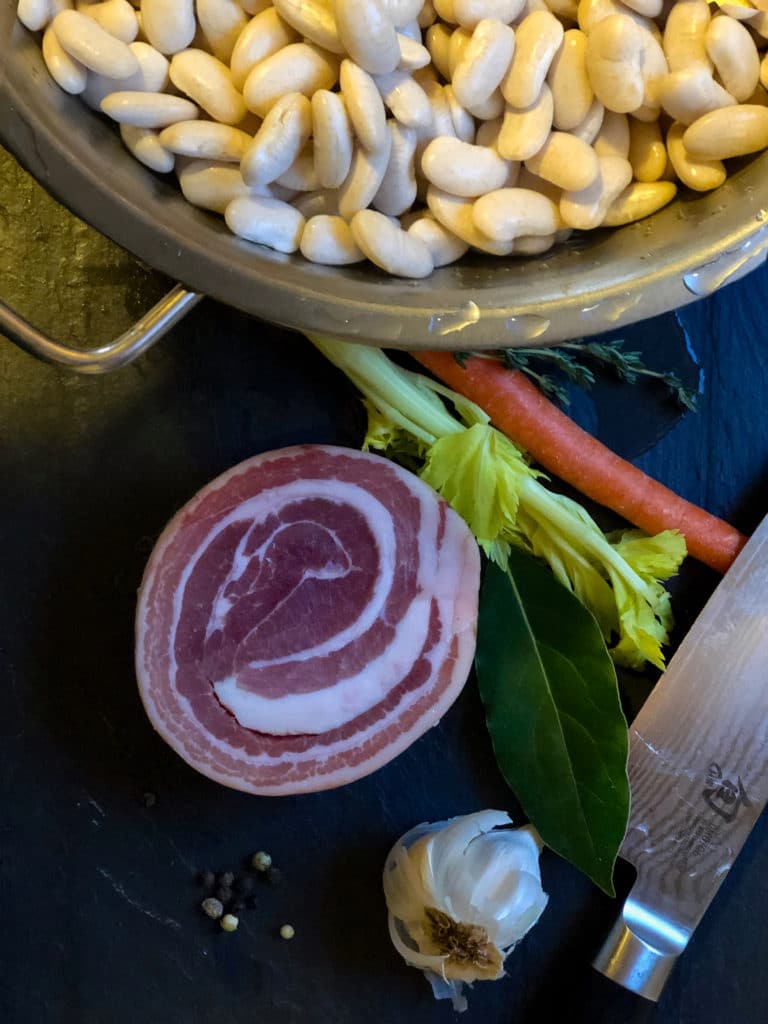Anyone who has indulged in Cassoulet will tell you that between the layers of duck fat and decadent sausages—confit duck legs and bone white Coco Tarbais beans—that there is pure magic. It is easily Gascony’s most celebrated and recognizable dish, named after the deep earthenware vessel it cooks in, the cassolle, Cassoulet inhabits a romantic place in our imaginations alongside the avant-garde posters of Henri de Toulouse-Lautrec (also from the region) and the rustic charm of an inexpensive yet thoroughly enjoyable Languedoc wine.
It has an enviable history, one that I will not attempt to reproduce here, but that can be read at leisure on Clifford A. Wright’s excellent blog post on the topic. There is, of course, an origin story about the besieged village of Castelnaudary pooling its meager resources during wartime, and the region’s own reverence of the dish captured in a saying that translates as: “Cassoulet is the God of Occitan cuisine. A god in three persons: God, the father, is that of Castelnaudry. God the son is that of Carcassonne, and the Holy Spirit is that of Toulouse.”
“Cassoulet is the God of Occitan cuisine. A god in three persons: God, the father, is that of Castelnaudry. God the son is that of Carcassonne, and the Holy Spirit is that of Toulouse.”
Divine it is. The process—the complete process, involves preparing the confit of duck well in advance. The method involves cooking the legs at a low temperature for a long period of time, what we call “low and slow” in our household, and then preserving the legs in the rendered fat. Prepared correctly, the legs will keep for weeks, or even over the winter. The method, as with many modes of food preservation, is one that allowed for long-term storage in a time before refrigeration.
D’Artagnan has spared us this crucial step by providing duck legs that have been deliciously transformed through this time-consuming process. The kit also contains ingredients that are authentic to the recipe, including duck & Armagnac sausage, and garlic sausage (not dissimilar to the classic Saucisse de Toulouse sausage I’ve seen referenced in other recipes), and a fabulous russet-hued cassoulet dish.
The initial step, soaking the beans overnight in water is followed by some modest prep, including the assembly of a bouquet garni. My goal, to faithfully reproduce the recipe posted below was fairly straightforward thanks to the concise instructions provided with the kit. One cannot help but feel a sense of reverence for the process, the assembly and enjoyment of the dish is a step back in time.

Three hours later, we enjoyed the finished Cassoulet with a lovely Châteauneuf-du-Pape, though there are many pairings that might work well including domestic, a general Côtes-du-Rhône, a hearty red from the Languedoc-Roussillon or even a domestic GSM. We also like Malbec from the Cahors.
For the second part of the exploration of this iconic bean stew, my more adventurous chef partner will make his own rendition of the dish. Stay tuned …
[amd-yrecipe-recipe:20]
